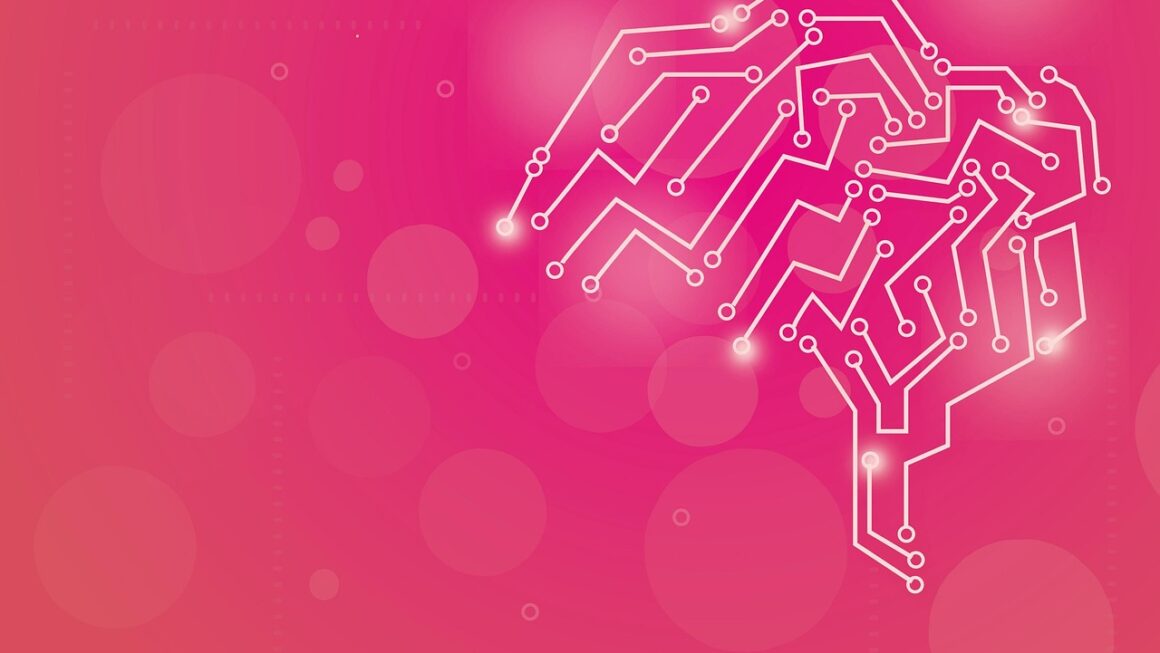Reinforcement learning (RL) has emerged as a groundbreaking paradigm within the field of artificial intelligence, enabling machines to learn optimal behavior through trial and error. Unlike supervised or unsupervised learning, RL focuses on training agents to make sequences of decisions in an environment to maximize a cumulative reward. This approach is particularly powerful for solving complex problems in robotics, game playing, resource management, and personalized recommendation systems. Ready to dive in and explore the fascinating world of reinforcement learning?
What is Reinforcement Learning?
Reinforcement learning, at its core, is about training an agent to make decisions in an environment to achieve a specific goal. The agent learns by interacting with the environment, receiving feedback in the form of rewards or penalties for its actions. Over time, the agent learns to associate certain actions with higher rewards, thus optimizing its behavior.
Core Components of Reinforcement Learning
- Agent: The decision-maker that interacts with the environment.
- Environment: The world with which the agent interacts. This can be a simulated environment like a game or a real-world setting like a factory floor.
- State: A representation of the environment at a given moment. The agent uses the state to make decisions.
- Action: A choice made by the agent that affects the environment.
- Reward: A scalar feedback signal that indicates how well the agent is performing. Positive rewards encourage actions, while negative rewards (penalties) discourage them.
- Policy: A strategy that the agent uses to determine which action to take in a given state. It essentially maps states to actions.
- Value Function: Estimates the long-term expected reward of being in a particular state and following a particular policy.
How Reinforcement Learning Works
The RL process unfolds in a cycle:
This process repeats iteratively, allowing the agent to gradually improve its performance. For example, consider a robot learning to walk. The environment is the physical world, the state might include the robot’s joint angles and velocities, the actions are the torques applied to the joints, and the reward could be a positive value for moving forward and a negative value for falling.
Types of Reinforcement Learning Algorithms
Reinforcement learning encompasses a variety of algorithms, each with its own strengths and weaknesses. Choosing the right algorithm depends on the specific problem you’re trying to solve.
Value-Based Methods
- Value-based methods focus on learning the optimal value function, which estimates the expected cumulative reward for being in a particular state. Examples include:
Q-Learning: Learns the optimal Q-value, which represents the expected cumulative reward for taking a specific action in a specific state. It is an off-policy algorithm, meaning it learns the optimal policy regardless of the agent’s actual behavior.
SARSA (State-Action-Reward-State-Action): An on-policy algorithm that updates the Q-value based on the action actually taken by the agent.
- Example: Imagine a game where the agent needs to navigate a maze. A value-based algorithm would learn the value of each location in the maze, guiding the agent towards the exit.
Policy-Based Methods
- Policy-based methods directly learn the optimal policy, which maps states to actions. These methods are particularly useful when the action space is continuous or when the optimal policy is stochastic. Examples include:
REINFORCE: A Monte Carlo policy gradient algorithm that estimates the gradient of the expected reward with respect to the policy parameters.
Actor-Critic Methods: Combine value-based and policy-based approaches. The actor learns the policy, while the critic evaluates the policy.
- Example: Training a self-driving car. The policy-based method would directly learn the steering and acceleration commands to navigate the road, rather than explicitly calculating the value of each state.
Model-Based Methods
- Model-based methods learn a model of the environment, which allows the agent to plan ahead and make more informed decisions.
- The agent learns a transition function that predicts the next state given the current state and action, and a reward function that predicts the reward received for taking that action.
- Example: A robot learning to manipulate objects. By learning a model of the physics of the world, the robot can predict the consequences of its actions and plan a sequence of actions to achieve a desired goal.
Key Challenges in Reinforcement Learning
While reinforcement learning is a powerful tool, it also presents several challenges that researchers and practitioners are actively working to address.
Exploration vs. Exploitation
- The agent must balance the need to explore the environment to discover new and potentially rewarding actions with the need to exploit its current knowledge to maximize its immediate reward.
- Exploration Strategies:
Epsilon-Greedy: Selects the best-known action most of the time but occasionally chooses a random action to explore.
Upper Confidence Bound (UCB): Selects actions based on both their estimated value and their uncertainty, encouraging exploration of less-visited actions.
- Finding the right balance between exploration and exploitation is crucial for efficient learning.
Credit Assignment
- Determining which actions were responsible for a particular outcome can be difficult, especially in environments with delayed rewards.
- For example, in a chess game, the reward is only received at the end of the game. Determining which moves were crucial for the win can be challenging.
- Techniques:
Temporal Difference (TD) Learning: Updates the value function based on the difference between the current estimate and the observed reward.
Eligibility Traces: Help assign credit to past actions by tracking their influence on the current state.
Sample Efficiency
- Reinforcement learning algorithms often require a large amount of data to learn effectively.
- This can be a problem in real-world applications where data is expensive or time-consuming to collect.
- Techniques to improve sample efficiency:
Transfer Learning: Leveraging knowledge from previous tasks to speed up learning on new tasks.
Imitation Learning: Learning from expert demonstrations to bootstrap the learning process.
Model-Based Reinforcement Learning: Learning a model of the environment to reduce the need for real-world interactions.
Stability and Convergence
- Some reinforcement learning algorithms can be unstable and may not converge to an optimal solution.
- This is particularly true for off-policy algorithms like Q-learning.
- Techniques for improving stability:
Experience Replay: Storing past experiences in a replay buffer and sampling from it to update the Q-values.
* Target Networks: Using a separate network to estimate the target values, which helps to stabilize the learning process.
Applications of Reinforcement Learning
Reinforcement learning has found applications in a wide range of fields, demonstrating its versatility and power.
Robotics
- Robot Navigation: Training robots to navigate complex environments, such as warehouses or hospitals.
- Robot Manipulation: Teaching robots to perform intricate tasks, such as assembling products or performing surgery.
- Example: Boston Dynamics uses RL to train its robots to walk, run, and perform acrobatic maneuvers.
Game Playing
- Board Games: Developing AI agents that can play board games like chess and Go at a superhuman level.
- Video Games: Training agents to play video games, such as Atari games or StarCraft.
- Example: DeepMind’s AlphaGo defeated the world champion in Go using a combination of reinforcement learning and tree search.
Resource Management
- Traffic Light Control: Optimizing traffic light timings to reduce congestion and improve traffic flow.
- Energy Management: Controlling energy consumption in buildings to reduce costs and improve efficiency.
- Example: Google uses RL to optimize the cooling systems in its data centers, reducing energy consumption by up to 40%.
Personalized Recommendation Systems
- Recommending Products: Recommending products to customers based on their past purchases and browsing history.
- Recommending Content: Recommending articles, videos, or music to users based on their interests.
- Example: Netflix uses RL to personalize its recommendations, increasing user engagement and satisfaction.
Getting Started with Reinforcement Learning
Interested in exploring the world of Reinforcement Learning? Here are some practical steps you can take to get started.
Choose a Programming Language and Framework
- Python: The most popular language for machine learning, with a rich ecosystem of libraries and tools.
- TensorFlow/Keras: Google’s open-source machine learning framework.
- PyTorch: Facebook’s open-source machine learning framework.
- Gym: OpenAI’s toolkit for developing and comparing reinforcement learning algorithms.
- Ray: A flexible, high-performance distributed execution framework well-suited for RL.
Learn the Fundamentals
- Take online courses on machine learning and reinforcement learning. Platforms like Coursera, edX, and Udacity offer excellent courses.
- Read textbooks on reinforcement learning, such as “Reinforcement Learning: An Introduction” by Sutton and Barto.
- Experiment with open-source reinforcement learning libraries and frameworks.
Practice with Simple Environments
- Start with simple environments like the ones provided by OpenAI Gym.
- Implement basic reinforcement learning algorithms like Q-learning and SARSA.
- Gradually increase the complexity of the environments and algorithms.
Contribute to Open Source Projects
- Contribute to open-source reinforcement learning projects on GitHub.
- This is a great way to learn from experienced developers and contribute to the community.
Conclusion
Reinforcement learning is a powerful and rapidly evolving field with the potential to revolutionize many industries. By understanding the core concepts, algorithms, and challenges, and by gaining practical experience through experimentation and collaboration, you can unlock the transformative potential of RL and apply it to solve complex problems in your own domain. The journey into the world of intelligent agents and adaptive learning is just beginning. Embrace the challenge and become a part of this exciting revolution.




